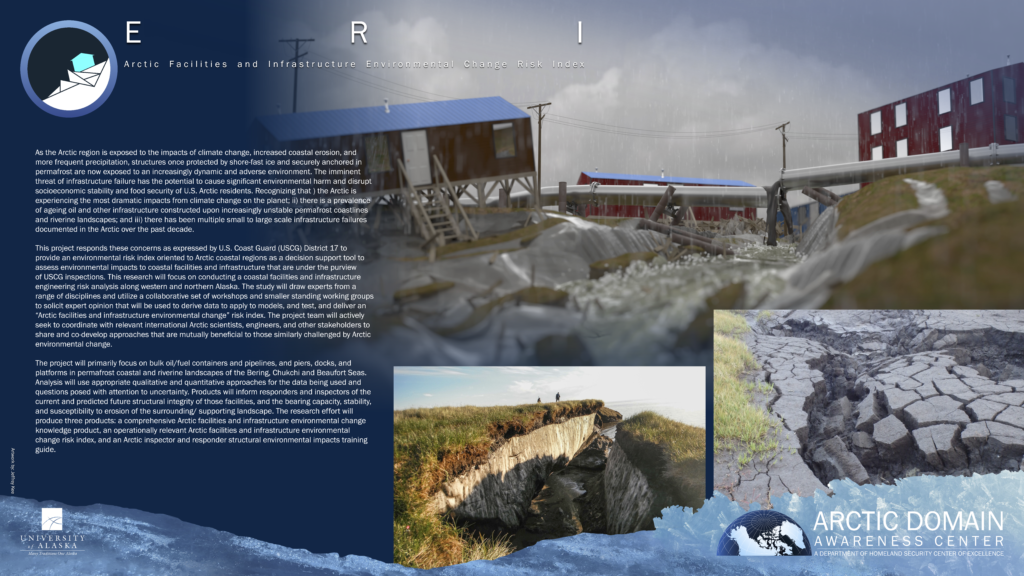Projects
Oil Spill Response
The focus of my academic research work is oil spill response in ice-laden waters of the Arctic. The following are projects I've undertaken or engaged in to better understand the interactions between oil slicks and sea ice.
Sea Ice Modeling
The underside of Arctic sea ice is rough, characterized by non-geometric, unpredictable protrusions into the water column. Hidden from view, these subsurface profiles impact ice-ocean frictional coupling, internal sea ice wave stimulation, acoustic scattering by the subsurface ice, and influence the complex marine food web at the ice-water interface. Prior research investigated subsurface profile characteristics using sonar transects and concluded that ice size and scale were regionally influenced and unpredictable in nature. Increasing transportation through the Arctic has revived interest in better modeling this complex subsurface landscape.
AMSM (2020-2022)
The Arctic Maritime Spill Modeling (AMSM) project is tasked with identifying the current state-of-the-art Arctic maritime oil spill response modeling, potential integration of these models, and specifics needs to be addressed to obtain models that will be functional and effective in the response time scale to advance the Federal On-Scene Coordinator’s decision making during an incident.
My role in AMSM was as a participant and expert on under ice roughness interactions with oil slicks. This was one of the most engaging and interesting colloquiums I had the pleasure of participating in.
AMSM is funded by DHS and developed through the Arctic Domain Awareness Center (ADAC) at the University of Alaska Anchorage.
AOSM (2016-2019)
The Arctic Oil Spill Model (AOSM) was aimed at developing techniques to estimate the spread of oil in ice-bound environments and produce forecasting models which can be coupled with existing oil spill forecasting systems.
My work on the project was focused on developing techniques to estimate the spread of oil released under ice by well blow-outs and pipeline ruptures as well as oil released among ice by events such as ship groundings.
AOSM was funded by DHS and developed through the Arctic Domain Awareness Center (ADAC) at the University of Alaska Anchorage.
Engineering & Risk
Risk is present in all endeavors. These projects are focused on engineering inquiry and design to reduce the risk to humans, and by humans to the environment, in the context of the Arctic.

ERI (2021-2022)
The Arctic Facilities and Infrastructure Environmental Change Risk Index (ERI) project is focused on providing an environmental risk index oriented to Arctic coastal regions as a decision support tool to assess environmental impacts to coastal facilities and bulk fuel infrastructure that are under the purview of USCG inspections. The team works closely with USCG D17 and Sector Anchorage in coordinating information and research endeavors.
I worked with the research team on the development of the engineering vulnerabilities assessment, and supported the project PIs by acting as the project manager.
ERI is funded by DHS and developed through the Arctic Domain Awareness Center (ADAC) at the University of Alaska Anchorage.
ARCTICE (2018-2022)
The Arctic Ice Condition Index (ARCTICE) project produces an easy-to-understand numeral to communicate ice conditions that are relevant to the capabilities of an individual vessel. This index is available for current and future ice conditions, providing forecasts from 72 hours up to 1 month in advance.
I was the author of the feasibility study for this project and defended the plan to win funding. I have enjoyed working with my research partners toward the development of ARCTICE and look forward to supporting the algorithm into the future.
ARCTICE was funded by DHS and developed through the Arctic Domain Awareness Center (ADAC) at the University of Alaska Anchorage.
ICECON (2017-2019)
The Great Lakes are the place in the U.S. where the U.S. Coast Guard has the most interaction with vessels in ice. In collaboration with the Coast Guard and others, ADAC’s project team has developed an Ice Condition Index (ICECON) for the Canada-U.S. Great Lakes. ICECON is a decision support tool that combines vessel class information with nowcast and forecast lake ice conditions.
The initial stage of ARCTICE was a feasibility study built on learnings from ICECON. I supported ICECON during this transition research.
ICECON was funded by DHS and developed through the Arctic Domain Awareness Center (ADAC) at the University of Alaska Anchorage.
